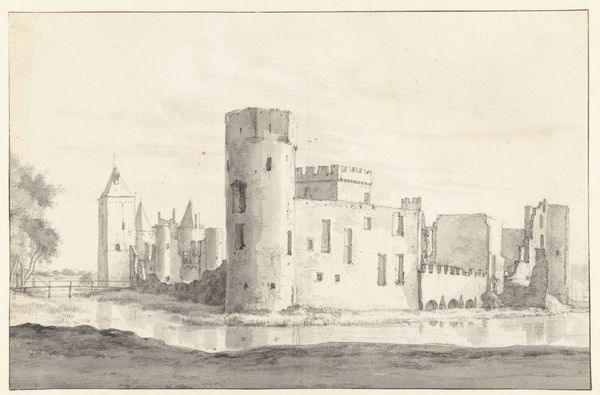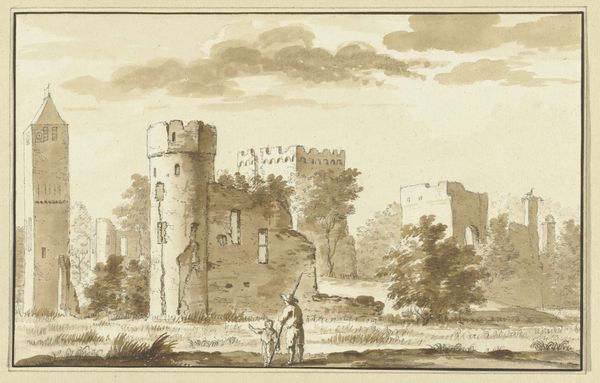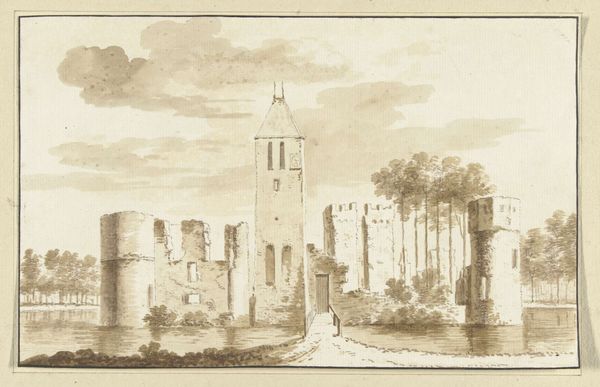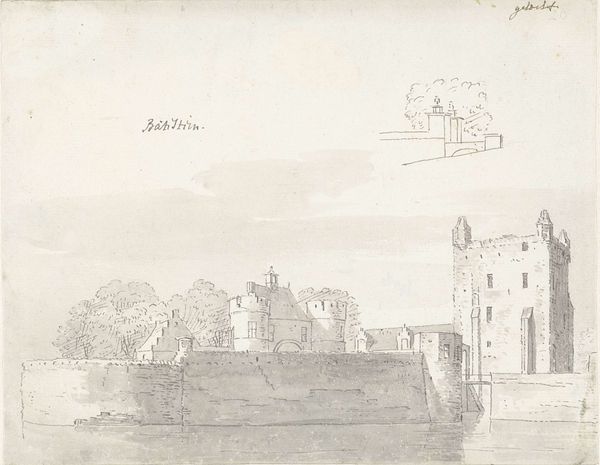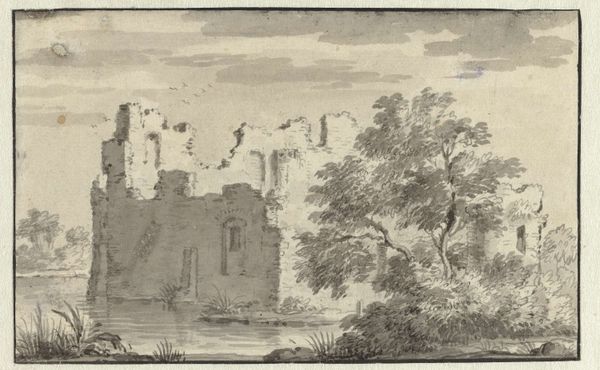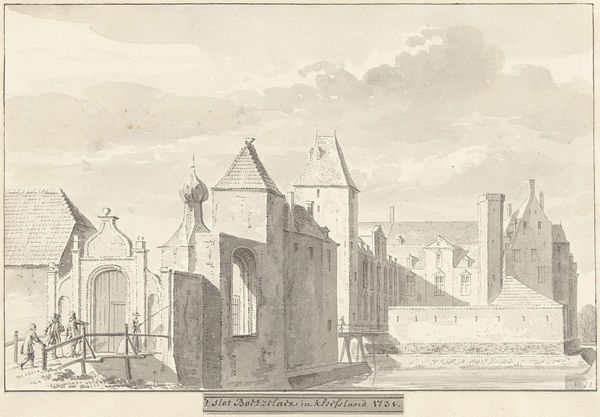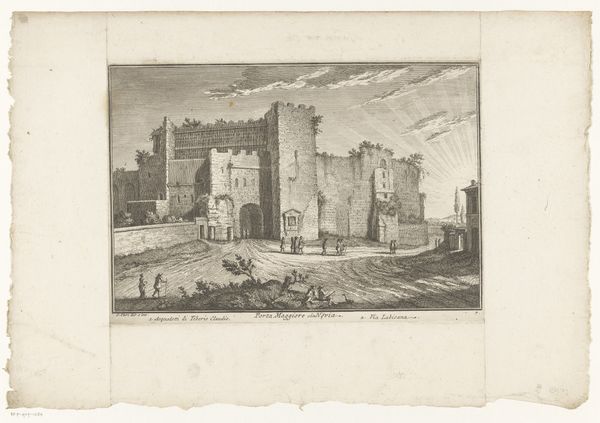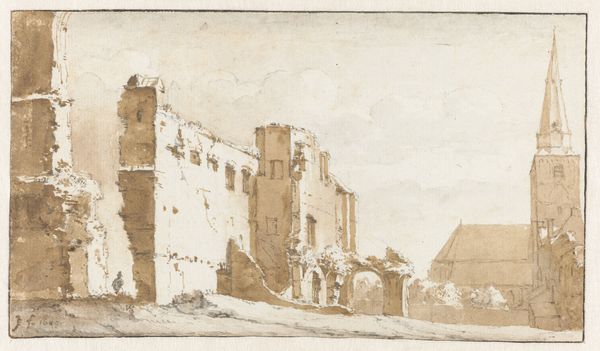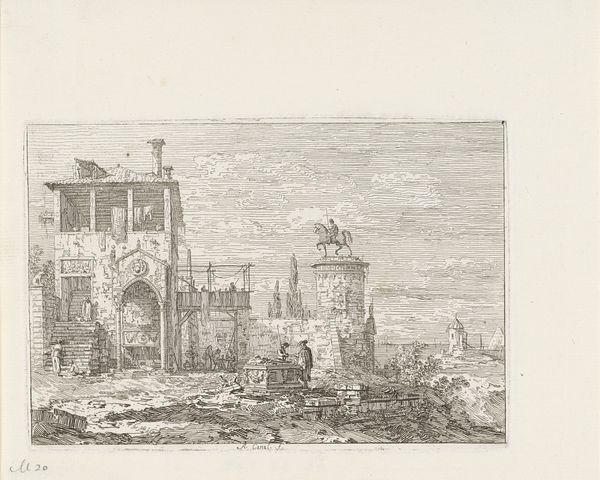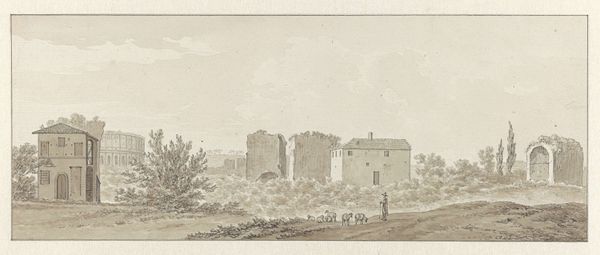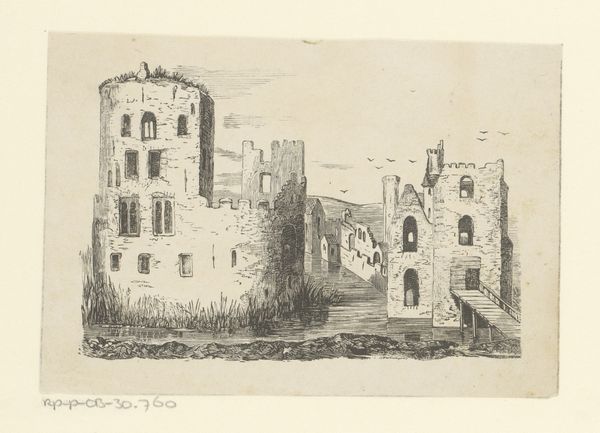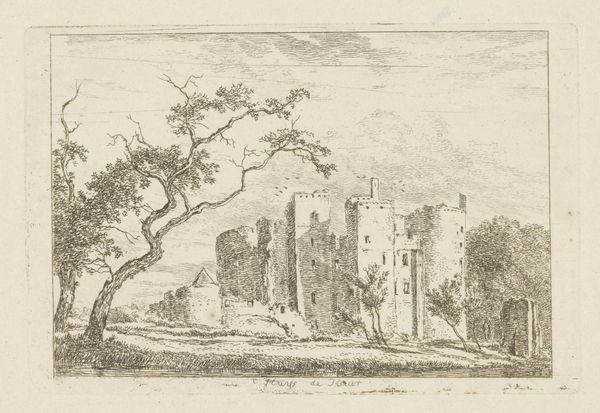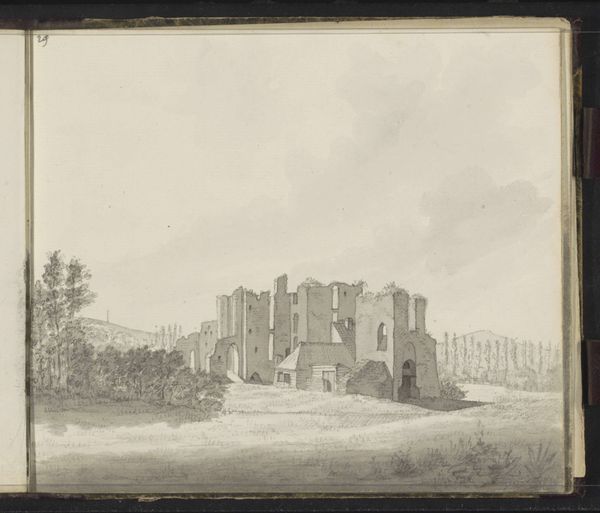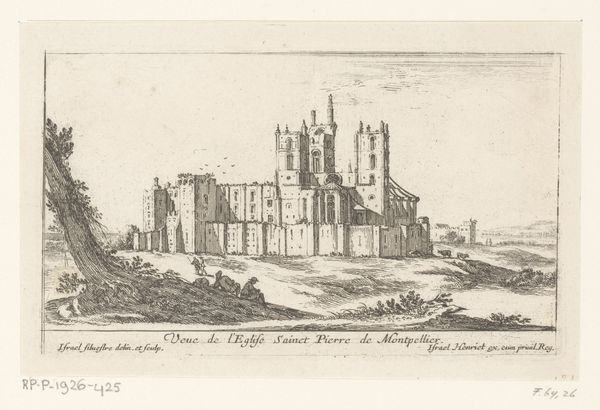
drawing, watercolor
#
drawing
#
baroque
#
dutch-golden-age
#
landscape
#
watercolor
#
cityscape
#
watercolour illustration
#
watercolor
Dimensions: height 196 mm, width 295 mm
Copyright: Rijks Museum: Open Domain
Curator: Before us is Jacob van der Ulft's 1663 work, "Gezicht op het kasteel St. Aldegonde te West-Souburg," a drawing rendered in delicate watercolor. Editor: It feels like a sepia dream. The monochrome palette imbues it with a sense of historical distance, almost melancholy. Is that crumbling masonry I see? Curator: Indeed. Notice how Van der Ulft meticulously captures the castle's architecture, its formidable structure juxtaposed against the softness of the watercolor medium. The washes of brown and sepia delineate form and create depth. Editor: I'm struck by how the figures in the foreground, dwarfed by the castle, hint at the societal power structures of the time. Are they inhabitants, or perhaps just passersby reflecting on a bygone era? I'd even hazard a guess that one of them is the artist himself... Curator: Fascinating, because one can consider this picturesque scene through the lens of Dutch Golden Age aesthetics. Van der Ulft wasn't necessarily making a political commentary, but adhering to a popular artistic sensibility—a demand for detailed cityscapes. Consider also the Baroque tendencies evident in its composition. Editor: It makes me consider concepts of Dutch identity in the 17th century, too, particularly issues related to land ownership, the aristocracy and social inequalities between country and city, wouldn't you agree? I see this crumbling building as an apt metonym of aristocratic decay. Curator: While the piece certainly lends itself to sociological readings such as that one, I am most moved by the formal relationships van der Ulft established between mass and detail, light and shadow. I can sense both the structure's resilience and its slow dissolution, creating an interesting tension in the scene. Editor: And it is precisely this tension which connects art history with contemporary critical and artistic approaches! Curator: A dialogue indeed. A great synthesis! Editor: Agreed! It really illuminates our interpretation of the piece.
Comments
No comments
Be the first to comment and join the conversation on the ultimate creative platform.
